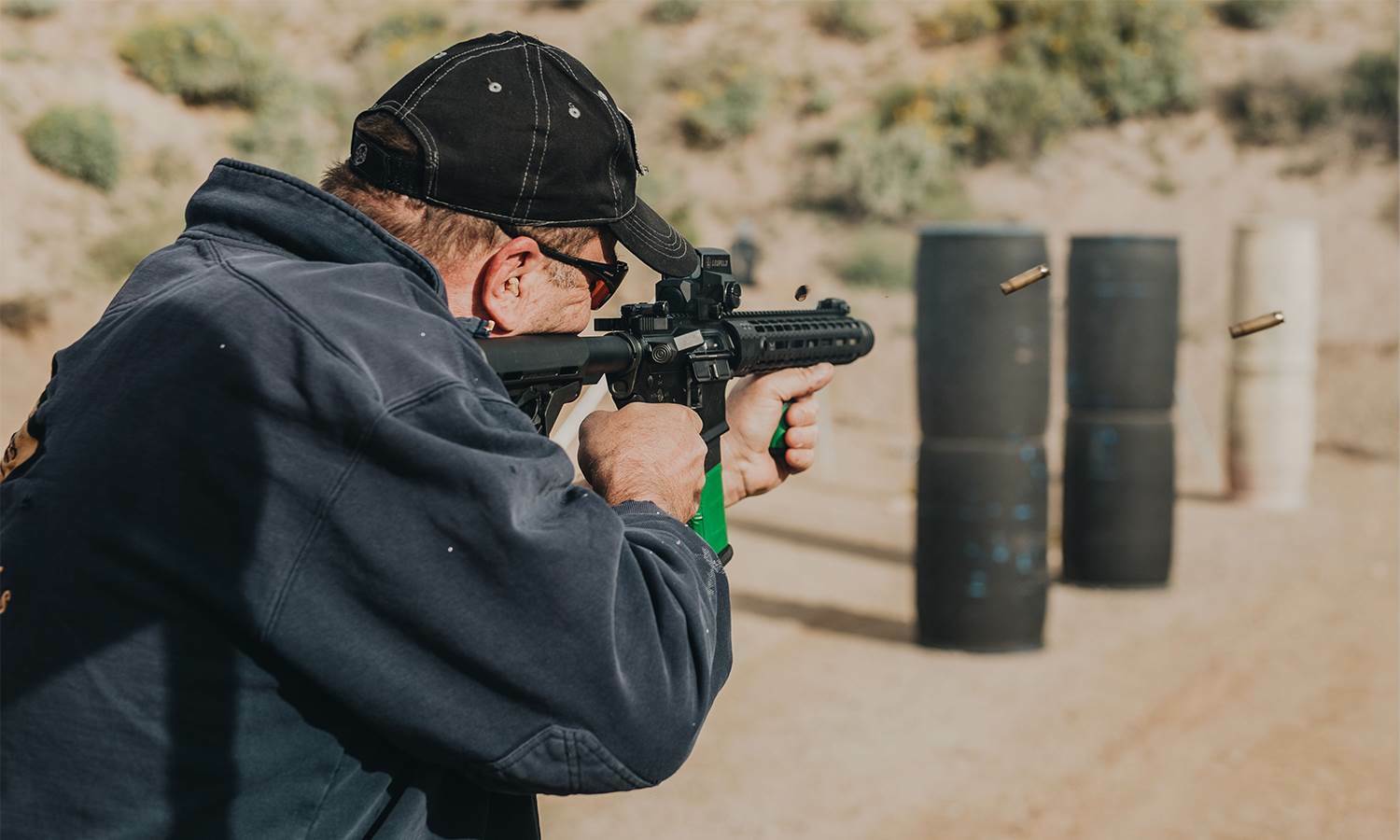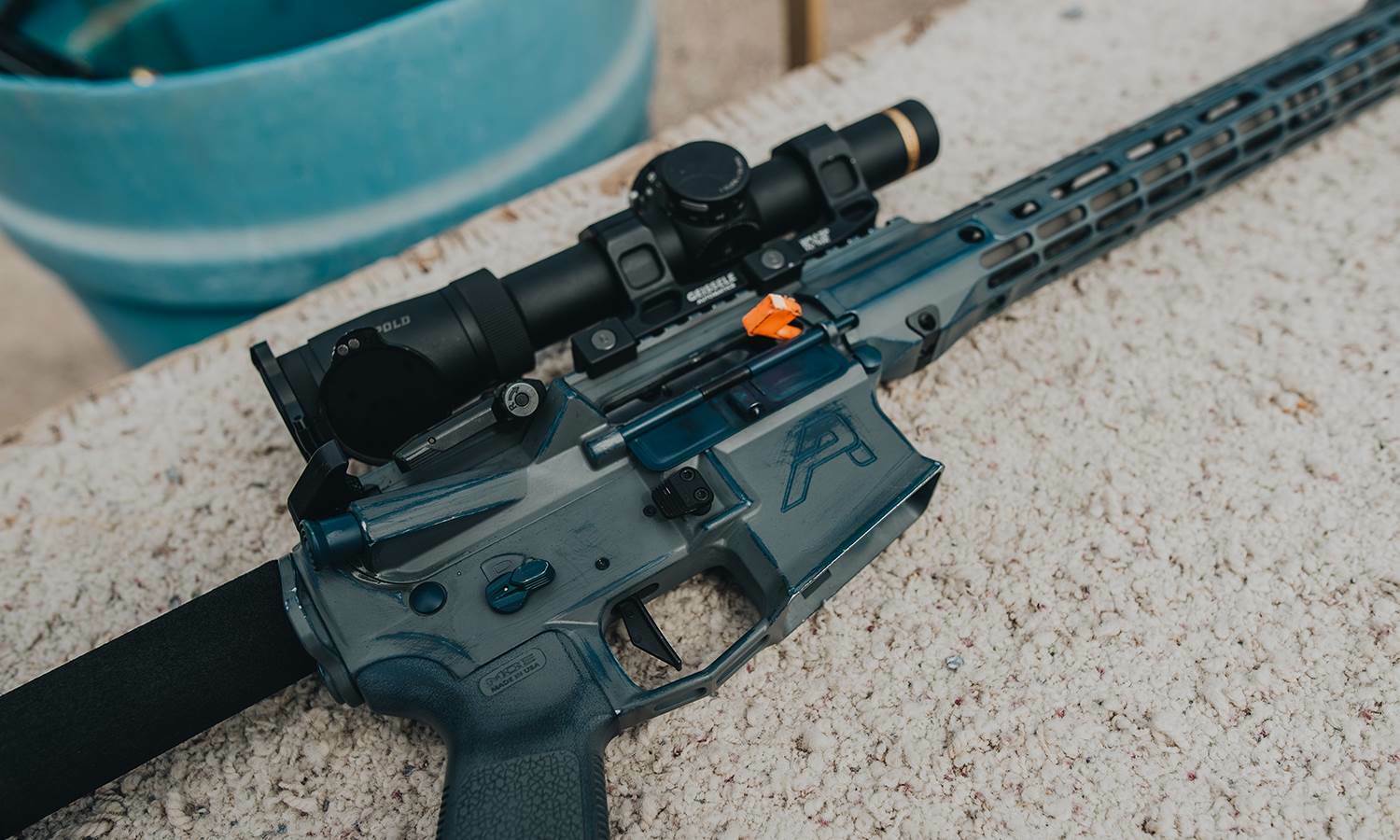
If you’re preparing for an upcoming custom AR build, you have some key considerations ahead: for instance, what will you chamber your rifle in?
Two ever-popular cartridges are .300 Blackout and 5.56 NATO—the latter being a bona-fide favorite for the AR platform and the standard for the M4. What’s the difference? Is .300 Blackout better than 5.56 NATO? Are the lowers compatible?
In this guide, we’re digging into the similarities and differences between these two rounds to help you choose the best possible components for your next custom rifle. We’ll also answer some FAQs and break down which cartridge is best for certain applications.
Similarities Between .300 Blackout and 5.56 NATO
Let’s start with similarities:
- Platform – Both rounds were designed specifically with the AR platform in mind: in particular, 30-round magazine capacity and short-barreled rifle (SBR) ballistic compatibility.
- Length – Both the .300 Blackout and 5.56 NATO measure 2.260 inches long—from bullet tip to case end. This was particularly important for the US Military, who originally commissioned the .300 Blackout from the Advanced Armament Corporation (AAC).
- General application – Is .300 Blackout better than 5.56 for the AR platform? Simply put, both rounds were designed for this platform and its variations. For anything you’d use your AR for (e.g., hunting, home defense, range practice), either round is an excellent choice.
Differences Between the Two Rounds
That said, the biggest differences between .300 Blackout and 5.56 NATO are noticeable when you take a look at a ballistics chart:
- Velocity – The .300 Blackout offers a slower projectile than the 5.56 NATO—at equal distances, the former is always going to be moving slower than the latter.
- Drop – As a result of slower velocity, .300 Blackout drops faster than the 5.56 NATO. As a result, 5.56 shoots flatter for a longer distance. For long-range hunters, this is a critical point of comparison between the two rounds.
- Energy – With velocity and drop in mind, why would a shooter choose to build a .300 Blackout rifle instead of a 5.56? Because .300 Blackout delivers more energy to the target than 5.56 at every distance—this makes it an exceptional choice for short- and mid-range lethality. This is why it was commissioned in the first place: the US Military was looking for a combat round with more stopping power in close quarters or mid-range distances than their 5.56 rifles offered.
Frequently-Asked Questions About These Rounds
With these points of comparison in mind, let’s tackle some of your burning questions about these two rounds.
Is .300 Blackout Better than 5.56 NATO?
No, the .300 Blackout isn’t better than 5.56 NATO on principle: all things considered, they’re relatively similar.
It all depends on what you’re looking for in a rifle round:
- If you’re looking for more stopping power, .300 Blackout might be ideal for your application.
- If you’d prefer the versatility implicit in a flat trajectory at a distance, the 5.56 NATO will likely meet your preferences.
- If you want a happy medium between long-range applicability, AR optimization, and lethality, both .300 Blackout and 5.56 NATO can fit the bill.
Can a 5.56 Lower Take .300 Blackout?
It’s important to note that, while a 5.56 NATO lower can accept and fire .300 Blackout rounds, you’ll need a .300 Blackout-compatible upper to tolerate the larger projectile size. The .300 Blackout bullet is nearly a tenth of an inch wider than the 5.56; so, if you shoot it through a 5.56 barrel, for instance, you won’t like the results.
Which One Performs Better for Hunting? Home Defense?
These rounds offer nuances to be considered for two of the most common AR applications (hunting and home defense).
Hunters should seek out a round that offers:
- A flat, reliable trajectory at their typical shooting distance
- Guaranteed lethality (ideally on the first shot through a vital organ)
For rifle hunters shooting whitetail in wooded areas, the flatter trajectory of the 5.56 NATO at a distance might not be relevant for their application; thus, they might prefer the greater energy (i.e., lethality) of the .300 Blackout. But for hunters shooting over very long distances (500+ yards), 5.56 might offer the ballistic reliability they’re looking for— but not necessarily.
Ethically speaking, hunters shooting at very long distances should probably consider even faster and more energetic rounds for ensured lethality: rounds like 6.5 Creedmoor and 300 Win Mag.
For home defense, shooters should be mindful of wall penetration (especially if there are other people living in your home). In this case, 5.56 is the better choice (since it hits targets with less energy than the .300 Blackout so it is less likely to overpenetrate).
Choosing the Round That’s Right for You
Between .300 Blackout and 5.56 NATO, which round is better for your next rifle? The answer depends on your shooting application and ballistic preferences.
Luckily, shooters who can’t decide could create a modular solution: using a 5.56 lower will give builders the option to swap out their upper receiver parts for .300 Blackout-compatible components as needed. You can, in fact, have the best of both worlds.

Wing Tactical: Your Home for Firearm Customization
Building a custom rifle gives shooters the opportunity to carefully curate their firearm’s capabilities—and choose their ideal caliber, of course. When it comes to the .300 Blackout vs. 5.56 NATO debate, shooters have much to consider about their shooting application and preferences.
If you’re looking for a high-quality collection of American-made firearm components for your next build, turn to Wing Tactical. As a veteran-founded brand, we’re committed to providing parts with peak reliability and trusted performance. Aftermarket parts are a dime a dozen, but we only carry parts that we’d use in our own builds.